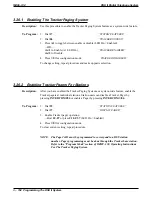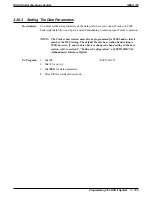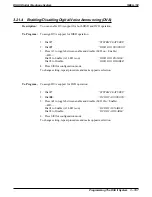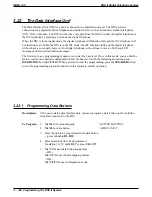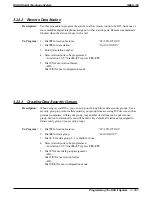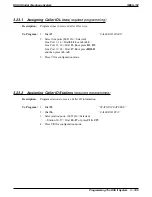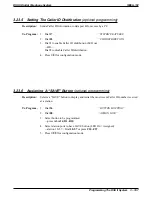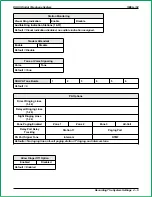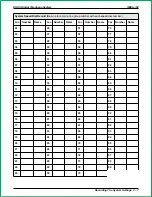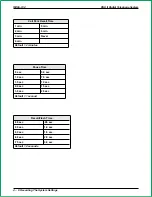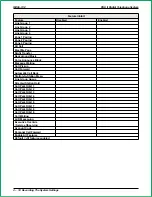
As an option, you can arrange for the system to provide Caller ID data distribution through the RS232
data port B to a personal computer (PC) just as it supplies SMDA data to a data printer. This data consists
of four special-purpose messages and is in the ASCII format suitable for use with PC-based application
programs. The messages are as follows:
Typical Message 1—sent out as soon as Caller ID data arrives from the CO
Message ID
and Identifier
(3 bytes)
Line No.
(2 bytes)
Caller ID Data
(15 bytes)
End of Message
(2 bytes)
3E
3C
31
30 35
31 2D 38 30 34 2D 39 37 38 2D 32 32 30 30 20
0D 0A
>
<
1
0
1
1
— 8
0
4 — 9 7
8
— 2
2
0 0
CR LF
Typical Message 2—sent when a ringing line with CID is answered or retrieved from hold.
Message ID
and
Identifier
(3 bytes)
Line No.
(2 bytes)
Station
No.
(2 bytes)
End of
Message
(2 bytes)
3E
3C
32
31
32
31 30
0D
0A
>
<
2
1
2
1
0
CR
LF
Typical Message 3—sent when CID data is not received from answered line or when a
line is taken off-hook
Message ID
and
Identifier
(3 bytes)
Line No.
(2 bytes)
Station
No.
(2 bytes)
End of
Message
(2 bytes)
3E
3C
33
31
35
31 32
0D
0A
>
<
3
1
5
1
2
CR
LF
Typical Message 4—sent when line is made idle
Message ID
and
Identifier
(3 bytes)
Line No.
(2 bytes)
End of
Message
(2 bytes)
3E
3C
34
30
35
0D
0A
>
<
4
0
5
CR
LF
IMI66–132
DSU II Digital Telephone System
3 – 164 Programming The DSU II System
Summary of Contents for DSU II
Page 31: ......



